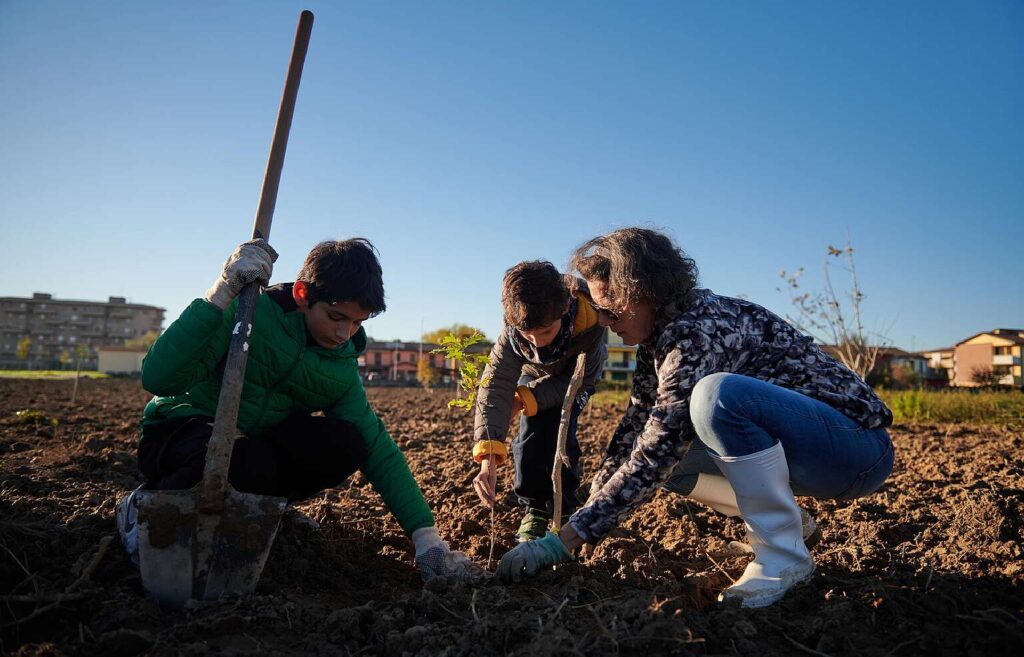It is celebrated today, May 22, the World Biodiversity Day.
Established in 2000 by the United Nations General Assembly – following the adoption of the Convention on Biological Diversity of Nairobi, on May 22, 1992 – this anniversary emphasizes the fragile balance between human life and the natural world. The goal is to stimulate the identification of concrete solutions to protect biological diversity and terrestrial ecosystems, increasingly threatened by climate change, pollution, and anthropogenic exploitation of natural resources.
The need to re-establish and maintain a sustainable relationship with the Earth’s ecosystem goes far beyond the conservation of biodiversity. It is crucial to ensuring the survival and well-being of current and future generations.

This challenge implies deep reflection on our relationship with the environment and natural resources: it is not only a matter of considering the immediate benefits of nature conservation, but also recognizing the crucial importance of healthy habitats in providing essential ecosystem services for humanity, such as climate regulation, water and air purification, soil fertilization and protection from natural disasters.
Ultimately, this involves a global commitment and a profound change in our development and consumption patterns.
The importance of the 2030 Agenda
Cooperation instead of competition, confrontation instead of conflict, these are the foundations from where to start. The same principles that guide the Agenda 2030 of the United Nations. Signed on September 25, 2015 by 193 UN countries (including Italy), this is the largest global plan of action to ensure new hope for our Planet and the people who inhabit it.
The Agenda establishes 17 Sustainable Development Goals to be achieved by 2030. These include “Life Underwater” (SDG. 14) and “Life on Earth” (SDG 15) which are closely related to the protection of biodiversity, while serving as indicators of progress on the entire 2030 Agenda.
Five are the cornerstones of the UN action plan: People, Prosperity, Peace, Partnership and Planet. A Planet whose fragile balance today is increasingly challenged by anthropogenic activity.
The datas in this regard do not lie:
- According to the FAO, in just thirty years (1990-2020) 420 million hectares of forests have been destroyed globally. Numbers even more alarming when we consider that 1.6 billion people depend directly on these habitats for their livelihoods.
- 772 billion, are the animals we kill each year for human consumption, a hundred times more than the entire human population. This phenomenon further contributes to the destruction of forests and ecosystems.
- According to the IUCN Red List, there are currently 16,900 animal species and 26,276 plant species in the world that are at risk of extinction.
- 2.6 billion people depend directly on agriculture for their livelihoods, but 52 percent of agricultural land is moderately or severely degraded, and as much as one-third of the world’s land area is at risk of desertification.

What is sustainable about this? More importantly, how can we begin to turn things around?
Greenpeace's food forest
To ensure the success of the Agenda for Sustainable Development, synergistic collaboration is needed among all key players in international cooperation: governments, businesses, the third sector and universities. This is also the heart of “BE PART OF THE PLAN“, the theme chosen this year to mark World Biodiversity Day: a call for global action to halt and reverse the loss of biodiversity.
Each of us can make a difference. A concrete example is the latest initiative of Greenpeace Italy: the creation of a food forest in Cremona, in the heart of the Po Valley, one of the most polluted areas in Europe.
Martina Borghi, Forestry Campaign Manager of Greenpeace Italy, spoke to us directly about this: “The Municipality of Cremona has granted on loan to the Agropolis Social Cooperative, our partner in this project, a piece of land that was in a state of neglect and will now house the ‘Bees Forest’, our food forest. The entire area, of about 5,500 m², was cleaned up, the inert materials disposed of, the trees present cared for and enhanced thanks to the vital help of volunteers and volunteers, and so the land was able to accommodate the first seedlings…”

What is it all about? “A food forest is a multifunctional cultivation that simulates, on a small scale, a forest ecosystem on several layers, in which we can find fruit plants, medicinal and medicinal herbs, berries, vegetables, flowers and more, in synergy with wild plants and animals that inhabit that particular habitat. And what makes this project even more special is its replicability!”
Martina explained, stressing how “in a world experiencing climate change and environmental crises, the need for sustainable practices is stronger than ever. The ‘Forest of Bees’ aspires not only to be a resource for pollinators, but also a biomonitoring site open to anyone who wants to explore the magic of nature.”
More than 75 percent of major agricultural crops and about 90 percent of wild flowering plants depend on bees, wasps, butterflies, ladybugs and other pollinators for pollen transfer and reproduction. Animal pollination is the fundamental basis for the functioning of ecosystems, habitat conservation and the provision of a wide range of vital human services and benefits, such as the production of food, fiber, timber and other essential products. Pollination is the basis of our existence and our societies.
What better way to celebrate Biodiversity Day?
Curated by
Alessandro Bertozzi

